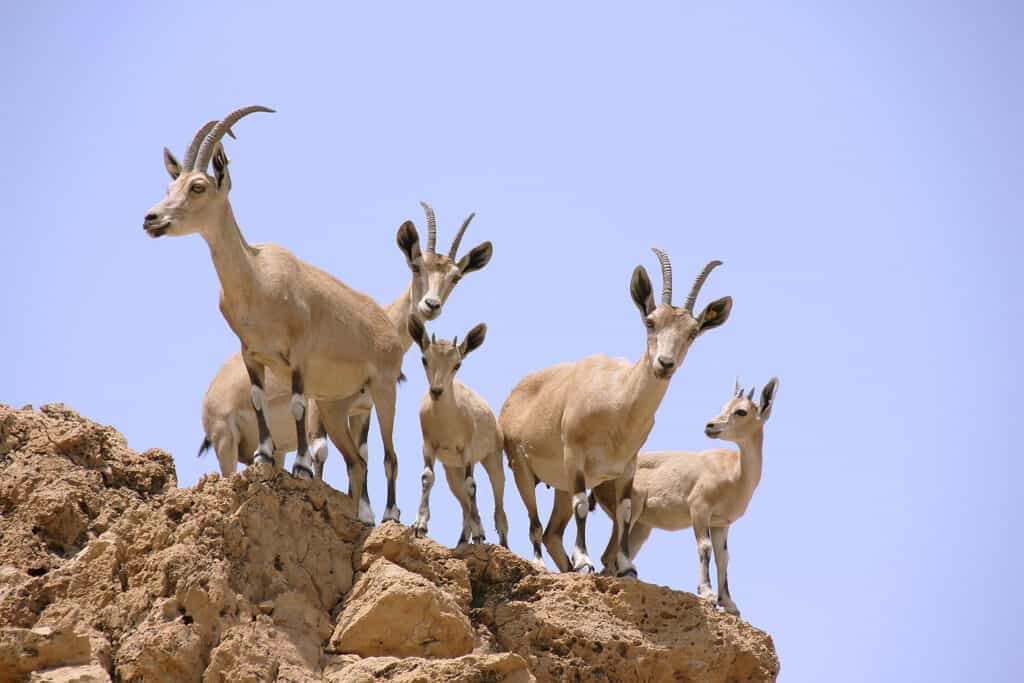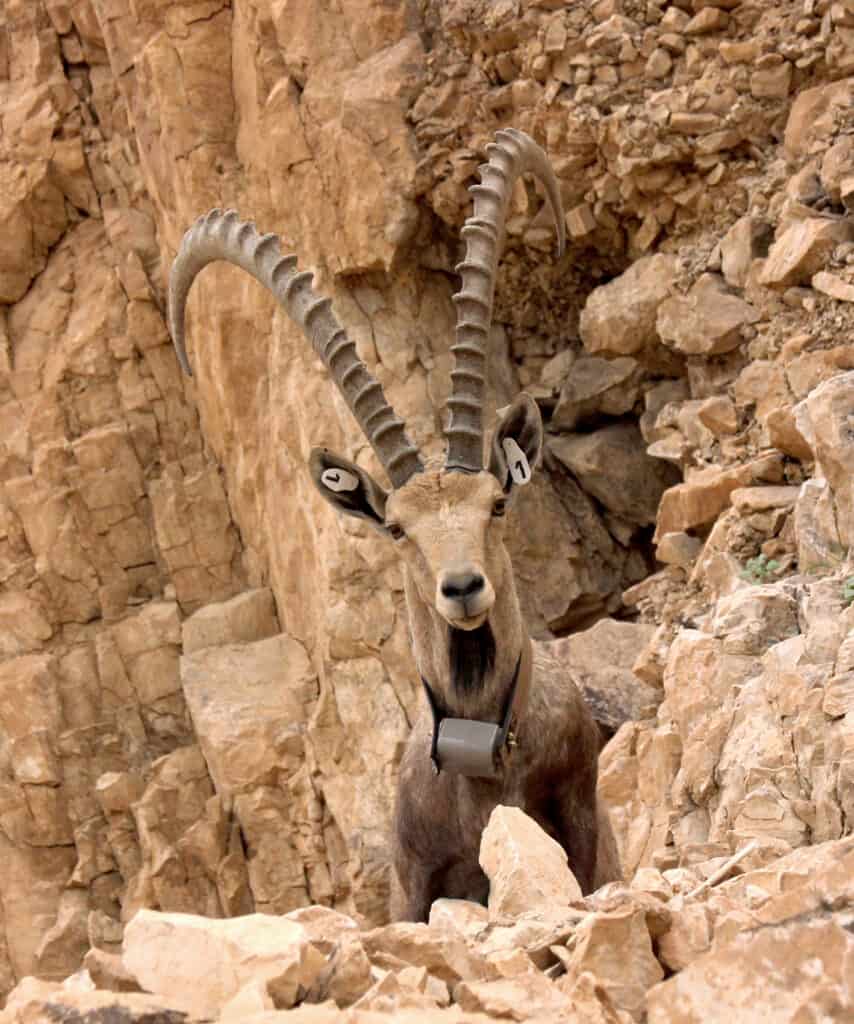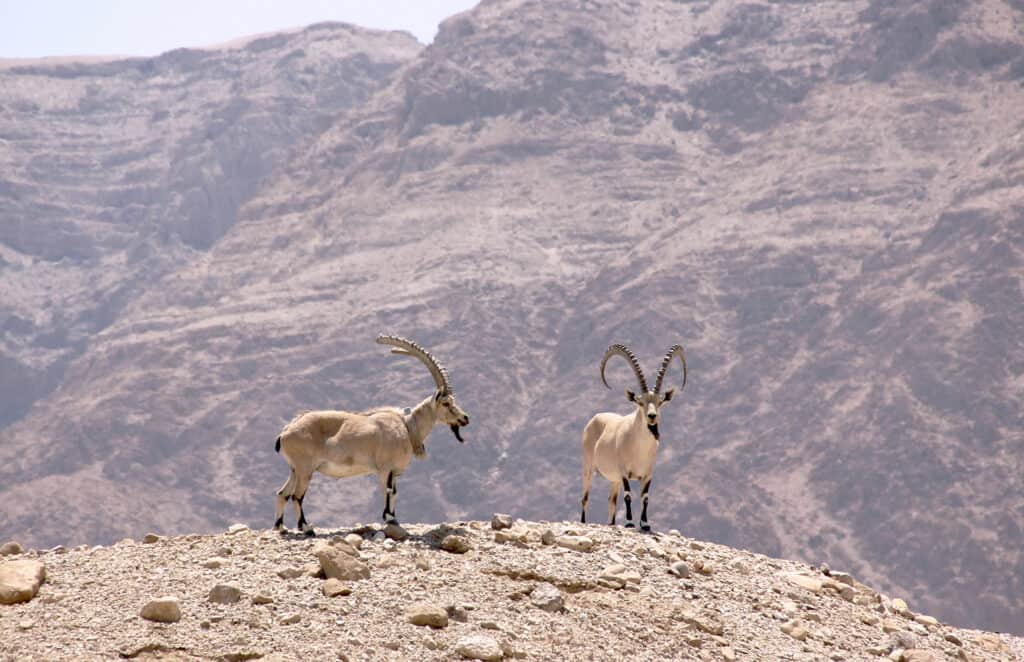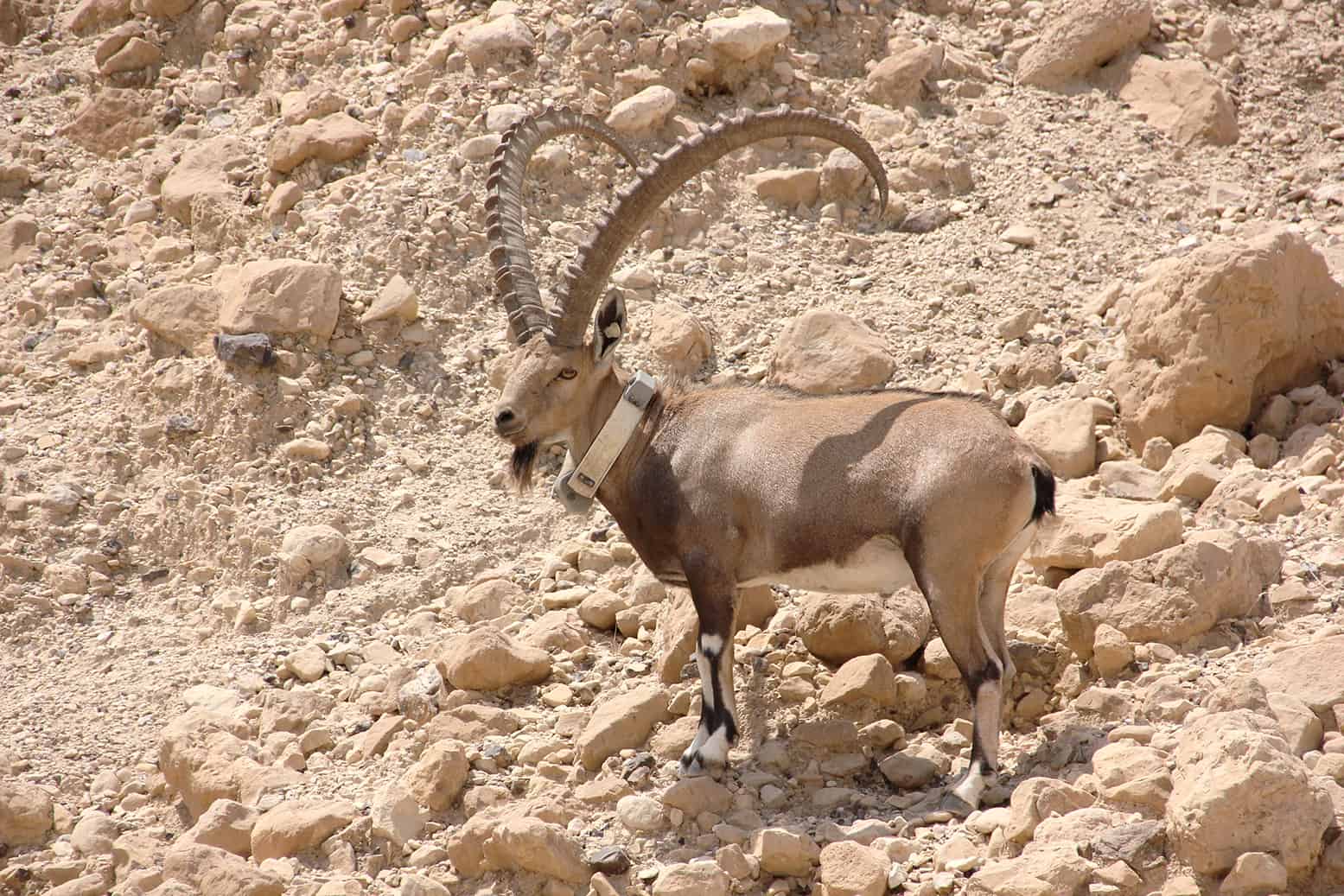Share this article
Wildlife Featured in this article
- Nubian ibex
WSB: Counting Nubian Ibex in the Judean Desert
Trail camera and GPS collar tracking reveal effects of drought on Israeli ungulate population
The Nubian ibex population in the Judean Desert experienced a crash in 2017 following a drought that year, with a substantial decrease in the survival of both males and kids.
But when the Israel Nature and Parks Authority conducted its annual count to assess the status of the local ibex population, the results indicated a small increase—a huge discrepancy when it comes to a vulnerable species.
“The authorities must use more statistically robust methods to follow what’s going on,” said Jonathan Tichon, who conducted this works as part of his PhD at Ben-Gurion University of the Negev in Israel.
Tichon was working on a trail camera project examining whether Arabian leopards (Panthera pardus nimr) were still present in the Negev Highlands in southern Israel while studying a local striped hyena (Hyaena hyaena) population. He never captured any footage of the elusive species, but saw many Nubian ibex (Capra nubiana), a species that’s relatively common in the region. For his PhD work, he decided to focus on the ungulates.

The International Union for Conservation of Nature lists the Nubian ibex (Capra nubiana) as vulnerable, with a declining world population of less than 5,000 adult individuals in the wild. The Israel Nature and Parks Authority has tracked the number of ibex using a technique that involves counting the animals as they move toward water sources. In the Judean Desert, there are relatively few water sources, including some artificial water stations built for ibex. But this method, Tichon said, is prone to error.
In a study published recently in the Wildlife Society Bulletin, he and his colleagues marked ibex and used trail cameras and GPS collars to determine the reliability and precision of the agency’s population counts in the northern Judean Desert, which extends across the eastern boundaries of Israel and the West Bank, the location of the largest verified population of the species in the world. They marked 48 ibex, 38 of which were also fitted with GPS collars, from 2016 to 2019. They conducted trail camera surveys at the end of August each year, a period when many of the temporary water sources have dried up, driving the ibex to larger or more permanent sources of water, but before rutting season begins.

In general, the research showed that the ibex sexually segregate outside the rutting season. Females stick around the areas where they were born and often hang out near the same water sources year-round. The males stick to different perennial water sources from the females during the dry season, while in rutting season they move sometimes great distances in search of receptive females.
The ibex population abundance estimates that Tichon and his colleagues derived from their methods using a mark-resight method differed from the government agency counts by a magnitude of up to three-folds. This is partly because the government method assumes that ibex come to drinking sources once per day. But the camera trap footage of marked individuals revealed that they only come to water sources once every 1.4 days for females, or every 1.5 days for males. This meant that biases were introduced due to the agency’s method, leading to underestimated ibex numbers.
Drought issues
Perhaps more concerning is that the government method completely missed a big die-off the year following a drought in 2017. Tichon and his team found that from 2017 to 2018, numbers of females dropped from 267 to 201, and males dropped from 291 to 160 individuals.
This is due in part to many of the kids not surviving the drought year, Tichon said. Females had difficulty lactating due to low food availability. But males also died in larger numbers due to them entering the rutting season in poor physical condition. In this period, males don’t eat much, spending more time fighting others or traveling in search of females, both of which can lead to enhanced exhaustion.
“The kids have lower survival, and the males have a drastically lower survival,” Tichon said. Yet the government’s current way of counting didn’t recognize this drop.

In any case, numbers of ibex rose again in 2019, according to the researchers’ abundance estimates the following year.
Another potential problem ibex have to contend with, the researchers found, is roads. “That’s a substantial amount of the population that is dying from [becoming] roadkill,” Tichon said.
This may occur as ibex are attracted to vegetation growing around the cement ditches that encourage water retention at the side of the road.
Tichon said that the technique they used for monitoring ibex population trends could likely be applied elsewhere. The north Judean Desert population is the biggest verified population of ibex in the world. But Tichon said there are definitely large ibex sub-populations in the Negev Desert, many them unmonitored. Honing counting techniques could improve our idea of how many of this vulnerable species remain, he said.
This article features research that was published in a TWS peer-reviewed journal. Individual online access to all TWS journal articles is a benefit of membership. Join TWS now to read the latest in wildlife research.
Header Image: The International Union for Conservation of Nature considers Nubian Ibex vulnerable. Credit: Jonathan Tichon








